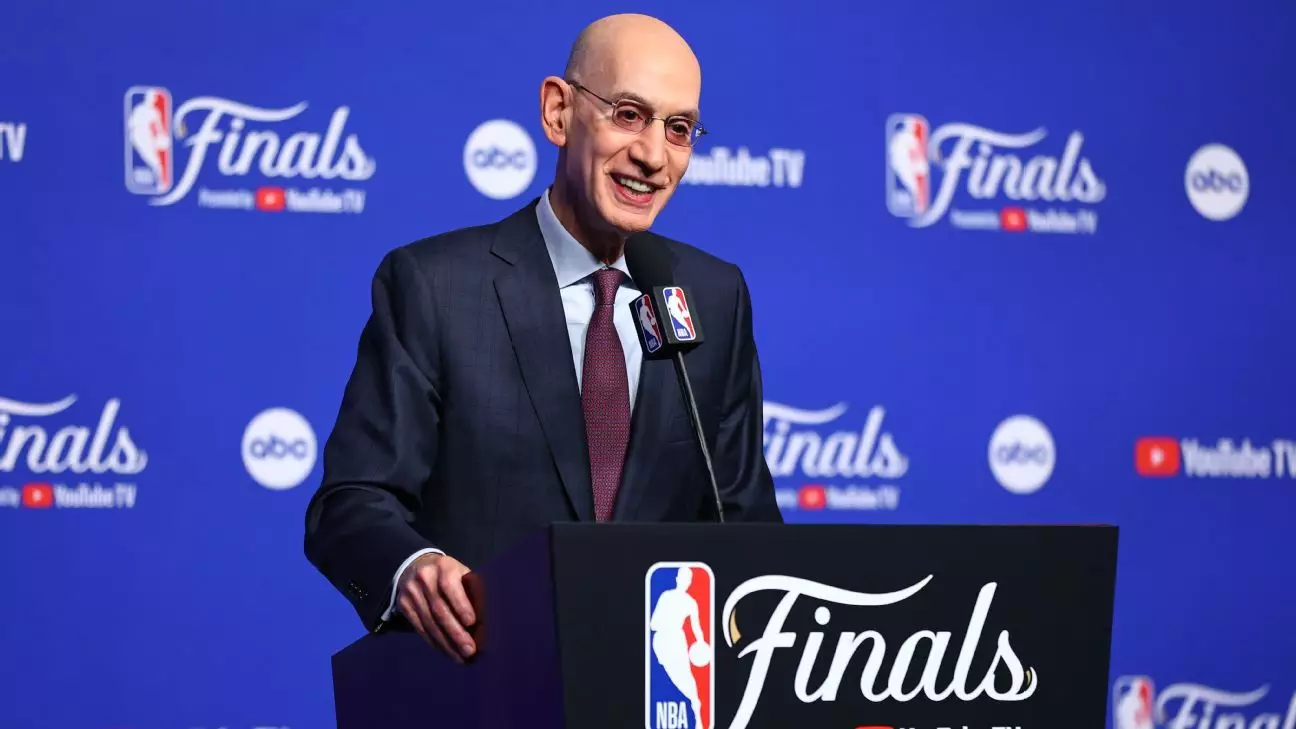In an exhilarating move that has captured the attention of sports fans and industry analysts alike, NBA Commissioner Adam Silver announced on Thursday that the league will actively consider expansion at the upcoming board of governors meeting in Las Vegas. This significant development signals a potential new chapter for the NBA, one that could lead to the addition of new teams in dynamic markets. Silver hinted at a sense of optimism among team owners regarding this exploration, indicating that there is a palpable shift towards expanding the league’s reach, particularly in underserved regions.
The last major expansion of the NBA took place in 2004 when the Charlotte Bobcats were introduced to the league, which means that the prospect of new teams has been a topic of conversation within NBA circles for nearly two decades. Silver, recognizing this prolonged interest, aims to “take the temperature of the room” at the July meeting. It is evident that the idea of expansion is not merely wishful thinking; it is an avenue that many believe deserves serious consideration for the growth and future of the league.
A Balancing Act: Understanding the Risks and Rewards
Silver’s approach to potential expansion encapsulates a delicate balancing act. On one hand, bringing additional franchises into the fold can foster growth, create new fan bases, and enhance the overall visibility of the league. This seems particularly pertinent in a landscape where there are existing markets that many argue are deserving of an NBA presence, such as Seattle and Las Vegas, which have long been recognized as prime candidates for new teams.
However, Silver also underscores a critical concern related to equity among existing franchises. He emphasized that expansion essentially means “selling equity in the league.” If there is faith in the existing structure, the addition of new teams may dilute that belief. It raises a moral question: should the NBA invite new teams at the risk of diminishing the value and resources afforded to current franchises? Managers and owners must weigh both the profitability and the competitive balance that accompanies such a move.
The Spotlight on Competitive Balance
After several years where the league has seen a fluctuating roster of champions—seven different teams claiming titles over the last seven seasons—Silver is keenly aware of the need for parity in a league characterized by fierce competition. While many associate this variety in champions with the new collective bargaining agreements aimed at creating equal opportunities, Silver has noted that the goal is not merely to crown a different champion each year; rather, it is about ensuring that all teams have a fair chance to battle for the top.
This notion of parity resonates deeply with die-hard basketball fans, who appreciate the unpredictability of the playoffs. When a franchise like the Oklahoma City Thunder or the Indiana Pacers makes it to the NBA Finals, it becomes a representation of strategic excellence in management and player cultivation. Fans enjoy watching teams rise and fall, and the unpredictability adds to the allure of the NBA.
Revolutionizing the All-Star Experience
Another exciting element that Silver discussed is the potential format change for the NBA All-Star Game. Given the league’s increasing international presence—30% of its players being non-American—it is essential to rethink how the event showcases this diversity. Silver hinted at a Team USA vs. the World format akin to what the NHL has pursued, which could elevate the stakes and fan engagement even further.
This strategic transition comes at a fortuitous time, coinciding with the NBA’s return to NBC for the All-Star Game. The event will take place during the Winter Olympic competition, allowing the NBA to leverage the heightened patriotic sentiments that accompany such prestigious sporting events. The opportunity to engage with fans who are already excited about international competitions could lead to record viewership and enriched fan experiences.
Remaining Challenges: The Regular Season Dilemma
Despite the enthusiasm surrounding potential expansion and innovative all-star formats, Silver firmly rejected discussions regarding a reduction in the NBA’s 82-game regular season. He remarked that financial considerations are paramount, hinting at the significant revenue generated from ticket sales, broadcasting rights, and merchandise linked to a full-length season. Furthermore, he contended that data does not support the belief that a shorter season would lead to reduced injury rates, emphasizing that the regular season format provides continuity and excitement for fans as they follow their favorite teams.
Silver’s comments reflect his commitment to maintaining the NBA’s status as a thriving business while preserving the elements of competition that fans love. The nuance in his statements regarding expansion and season structure reveals a leader who is not only cognizant of current challenges but also seeks balanced solutions that invigorate the league for the long term.
The future of the NBA looks bright, pregnant with possibilities as it stands at this crucial crossroads. With thoughtful leadership and innovative strategies, the league may truly embark on an exhilarating new era.

